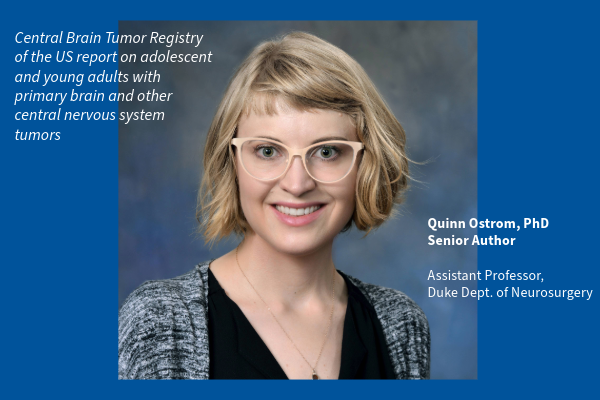
Duke Neurosurgery's Quinn Ostrom, PhD, is senior author of a new statistical report released yesterday
A new report released yesterday sheds light on the prevalence of primary brain and other central nervous system (CNS) tumors among adolescents and young adults (AYAs).
The study revealed that brain and other CNS tumors are the second most common cancer type among people between the ages of 15 and 39, with an average of 12,848 individuals diagnosed annually. Over 90 percent survived for at least five years, with approximately 208,620 AYAs expected to be living with a history of brain or other CNS tumor diagnosis in 2024.
The American Brain Tumor Association (ABTA) presented the findings, in partnership with the National Institutes of Health’s National Cancer Institute (NCI) Comprehensive Oncology Network Evaluating Rare CNS Tumors (NCI-CONNECT) program and the Central Brain Tumor Registry of the United States (CBTRUS).
Quinn Ostrom, PhD, assistant professor in the Duke Department of Neurosurgery, was senior author of the report. Duke Neurosurgery’s Mackenzie Price and Corey Neff were lead authors.
“This is the first statistical report to analyze this unique population while incorporating current tumor classifications based on recent molecular data,” said Ostrom. “Understanding the burden of disease and knowing the molecular makeup of tumors is different within this population is a significant step towards improving health outcomes and care.”
Kyle Walsh, PhD, neuro-epidemiologist and associate professor in the Duke Department of Neurosurgery, emphasized the importance of the new report. “These registry data cover the entire U.S. over a five-year period (2016–2020), totaling 64,238 new brain and CNS tumor diagnoses in persons ages 15–39 years (approximately 27% malignant, 73% benign),” he said. “This epidemiologic report supersedes all previous reports in terms of both completeness and accuracy; it is a huge service to the research community.”